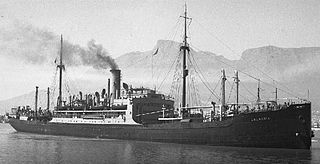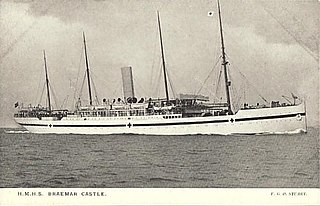
The Tower Hill Memorial in London is a pair of Commonwealth War Graves Commission memorials commemorating 36,087 civilian merchant seamen who were lost at sea in the First and Second World Wars.
Contents
During the First World War, 3,305 merchant ships were sunk with a total of around 17,000 crew and personnel lost. In the Second World War, 4,786 merchant ships were sunk with a total of around 32,000 crew and personnel lost. Not all these ship losses are named on this memorial, as some ships were sunk or captured with no casualties. Similarly, some of those named on the memorial died in incidents or battles where the ship was not lost.
The dead are listed by the ships they served on. Although many of the ships listed on the memorial were sunk, the loss of the ship is not necessary for it to be listed—the memorial commemorates members of the British Merchant Navy who died as a result of enemy action and who have no known grave. [1] Those with known graves are not commemorated here, nor are the missing that served in other organisations (such as the gunners manning defensively equipped merchant ships), or those listed on other memorials to missing merchant seafarers (such as the memorials to the missing of the Indian Merchant Navy). Crew members lost when hospital ships were targeted are included here (see list of hospital ships sunk in World War I and list of hospital ships sunk in World War II). As well as cargo ships, a number of ocean liners were chartered or requisitioned and used to transport troops and cargo during the war.
It is possible for a ship to be listed under different names, such as MV Domala which is listed for 17 of the 108 casualties sustained on 2 March 1940, but is also listed as SS Empire Attendant after it was repaired, rebuilt, and renamed before being torpedoed on 15 July 1942 with the loss of all hands (the 50 crew listed on this memorial and 9 DEMS gunners). Similarly, the listings for SS Inanda and SS Empire Explorer refer to the same ship, repaired, renamed and later sunk.
There are 24 sections of name panels on the First World War memorial and 132 name panels on the Second World War memorial, with the ships of the mercantile marine (later merchant navy) and fishing fleets listed separately. The largest losses of merchant seamen in single shipwrecks commemorated on these memorials are RMS Lusitania in the First World War and SS Ceramic in the Second World War.











